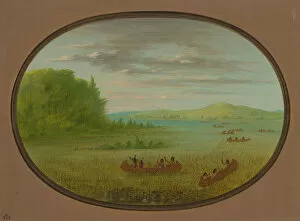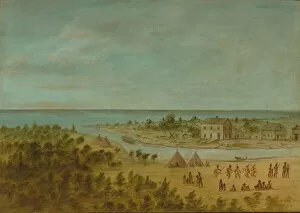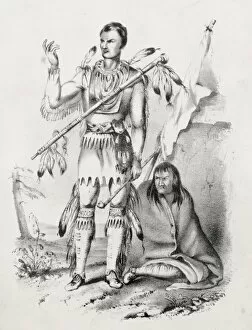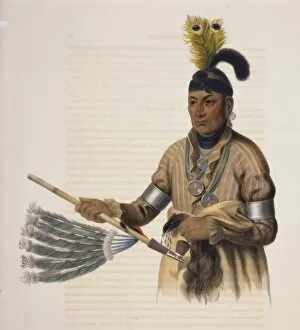Winnebago Collection
"Exploring the Rich Heritage of the Winnebago Tribe through Art and History" Step into a world where the captivating culture of the Winnebago Indians comes to life
All Professionally Made to Order for Quick Shipping
"Exploring the Rich Heritage of the Winnebago Tribe through Art and History" Step into a world where the captivating culture of the Winnebago Indians comes to life. In George Catlin's masterpiece, "Winnebago Indians playing Checkers, " we witness their skillful gameplay, showcasing their strategic minds and competitive spirit. Meet Wah-kon-ze-kaw, also known as The Snake. This remarkable portrait by Catlin captures his dignified presence and offers a glimpse into his powerful persona. Similarly, Won-de-tow-a, aptly named The Wonder, mesmerizes us with his enigmatic gaze that holds countless untold stories. Du-cor-re-a stands tall as Chief of the Tribe in another striking painting by Catlin. His regal stance exudes authority while depicting his deep connection to his people. Accompanied by his family, this portrayal showcases their unity and resilience amidst challenging times. The Spaniard, Span-e-o-nee-kaw in native tongue, adds an intriguing twist to this narrative. A cultural fusion between European influence and indigenous roots is evident in this artwork—a testament to the diverse history of these tribes. Moving beyond portraits, we delve into scenes from everyday life within the tribe. "Gathering Wild Rice - Winnebago" transports us back to 1861 when sustenance was derived directly from nature itself—a reminder of their harmonious relationship with Mother Earth. Chicago's transformation over time is unveiled through Catlin's lens in "View of Chicago in 1837. " Witnessing this bustling cityscape allows us to appreciate how Native American tribes coexisted alongside rapid urbanization during that era. Hairy Bear and Big Snake take center stage among other notable figures from Allen & Co. 's American Indian Chiefs series (N2). These representations honor tribal leaders who played pivotal roles within their communities—symbols of strength and wisdom passed down through generations. Discovering the Winnebagoes' artistic expressions extends beyond paintings.




























